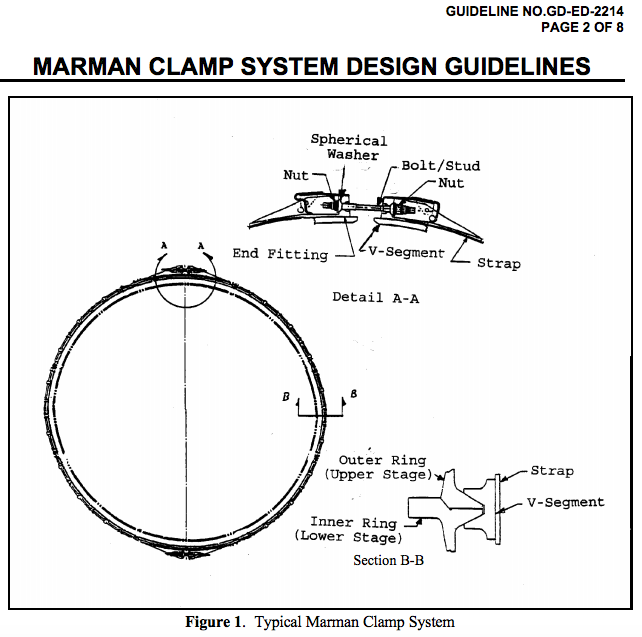For a project I have to find select a decoupling mechanism for a spacecraft. I have searched google but I can't find any documentation on decoupling mechanisms. I need to know what types of decoupling mechanisms exist for spacecraft.
-
2$\begingroup$ Are you referring to stage separation? $\endgroup$– userCommented May 8, 2017 at 13:20
-
2$\begingroup$ Or payload release systems? $\endgroup$– Organic MarbleCommented May 8, 2017 at 15:48
-
$\begingroup$ One traditional method for stage separation is the use of pyrotechnic fastener or explosive bolts, see en.wikipedia.org/wiki/Pyrotechnic_fastener $\endgroup$– UweCommented May 8, 2017 at 18:10
-
1$\begingroup$ I'm looking for any type of separation $\endgroup$– Michel TouwCommented May 8, 2017 at 21:11
-
1$\begingroup$ You should edit your question to clarify what you are interested it. It is attracting close votes as "unclear". $\endgroup$– Organic MarbleCommented May 8, 2017 at 21:41
3 Answers
According to The Logic of Microspace: Technology and Management of Minimum-Cost Space Missions by Rick Fleeter (Microcosm & Kluwer, 2000), p.130, the de-facto standard mechanism for separating spacecraft from launch vehicles is the Marman ring.
The spacecraft and launch vehicle each have a truncated cone structure, the wide side of each fitted against the other. A ring-shaped spring called a Marman band is wrapped around both, forcing them tightly together. There are two explosive bolts on either side of the Marman band, so that if either is blown the band straightens and the two vehicles separate. The release system is set up to blow both bolts.
Cubesats work differently though I'm not familiar with the standards (I think there are several mechanisms as cubesat is really just a form factor).
From Microcosm & Kluwer, 2000, p.131:
Marman or manacle rings are to satellite separation as Mick Jagger is to rock and roll — sort of instant credibiltiy. Nobody doubts Mick is the real thing. Tell any tough reviewer that you’re using a manacle ring separation mechanism, and they’re happy. Unlike Mick, who really is the real thing, the Marman Ring isn’t constant as the Northern star, which Joni Mitchell once pointed out. Like her, over the year it’s been reinterpreted many times, and the real physics behind its operation are somewhat subtle and beyond the current scope.
The text continues on to describe various technical issues that one must consider in a design that needs to have high reliability.
Screen shots from: https://upload.wikimedia.org/wikipedia/commons/e/ee/Guideline_No._GD-Ed-2214_Marman_Clamp_Systems_Design_Guidelines.pdf
-
$\begingroup$ Sounds weirdly similar to a KF fitting $\endgroup$– ikraseCommented Jun 12, 2020 at 1:29
Another mechanism used on some Shuttle payloads was the "Super*Zip" system, which was a metal band encircled by a pyrotechnic cord or cords. The design intent was that the firing of the pyrotechnic device would split the band, freeing the payload.
Source NASA TM 4031 Investigation of Super*Zip Separation Joint
The system became infamous on shuttle mission STS-051 when miswiring in the pyro initiator circuits caused both the primary and backup separation cord to fire simultaneously, showering the payload bay with high-velocity debris.
...resulting in the rupture of the containment tube, doubler plates, lead sheathing, silicone rubber extrusion and in the emission of carbon particles (smoke). One affected plate penetrated through the shuttle orbiter aft bulkhead insulation blanket and punctured a 1/8 x 1/2 inch hole in the aft bulkhead. Flight/crew critical equipment exists immediately behind the bulkhead. Other debris caused at least nine small tears in cargo bay insulation blankets, three gouges in wire tray covers and possibly a gouge in a thermal protection system tile.
SpaceX Falcon rockets use pneumatically actuated mechanical collets to unlock the stages and pneumatic pushers to apply positive separation force between them once unlocked.


